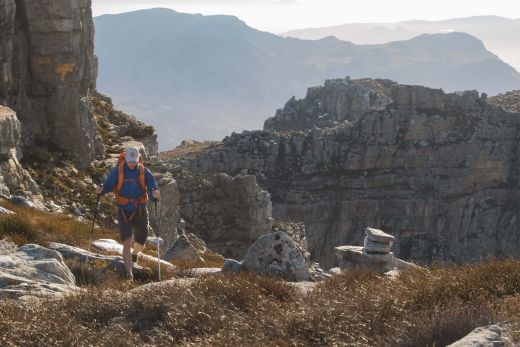Unlike sports watches and high-end mountain bikes, there’s nothing particularly sexy or exciting about trekking poles. And yet they are one of the most hotly-debated topics among runners and hikers everywhere. So what is it about these simple pieces of equipment that splits outdoorsmen into advocates and opponents? I’m not going to argue whether or not poles offer an mechanical advantage – I think the number of runners lining up for race starts says enough – but I am going to explain how and when trekking poles are useful, and will then explain how your decision to use them might go beyond their practicalities. Whether you are a runner, thru-hiker, or fastpacker, this is the article you should read first if you’re thinking of buying a pair of poles.
Pros
Uphill efficiency
Steep uphill sections are the one type of terrain where poles give both hikers and trail runners a clear advantage. But this is not because sticks help you walk faster. They don’t.
What poles do is help you walk more efficiently by allowing your arms to generate some of the upward motion that would otherwise be entirely on your legs. Sharing the load this way reduces the localised fatigued in your legs and allows you to walk more upright, which opens up your chest. If you’ve ever found yourself leaning on your knees during steep uphills, you can now imagine the advantage of being able to lean on a pair of poles instead.
Additional support on the downhills
Used correctly, poles allow you to slow your fall through large downward steps, reducing the impact on your joints. This is a real advantage when hiking with a large pack, an activity that can take a toll on hips and knees. Runners, however, are less likely to benefit from using poles on downhill runs. On wider less-featured trails you might still have enough open ground to use them properly, but on narrow, technical trails, you usually won’t have enough time to plant your poles accurately – stabbing them at the trail can result in you breaking or tripping over them. If you've been forced to slow down, your poles might become useful again, especially if you use them to pick your way across loose skree or a boulder field.
Improved balance on technical terrain
Besides steep sections, the other area where poles are very useful is slippery, sketchy terrain. The benefits of having poles on icy trails should be obvious, but it’s river crossing where poles really shine. Not only do give you something to lean on, but they also allow you to probe water too murky or turbulent to see into – just what you need when you have to wade in. Even if you’re only crossing a stream a few inches deep, a pair of poles can mean the difference between getting across cleanly and tripping and dropping your pack and camping gear in the drink. For this reason, I strongly recommend carrying poles if you’re going to make multiple river crossings.
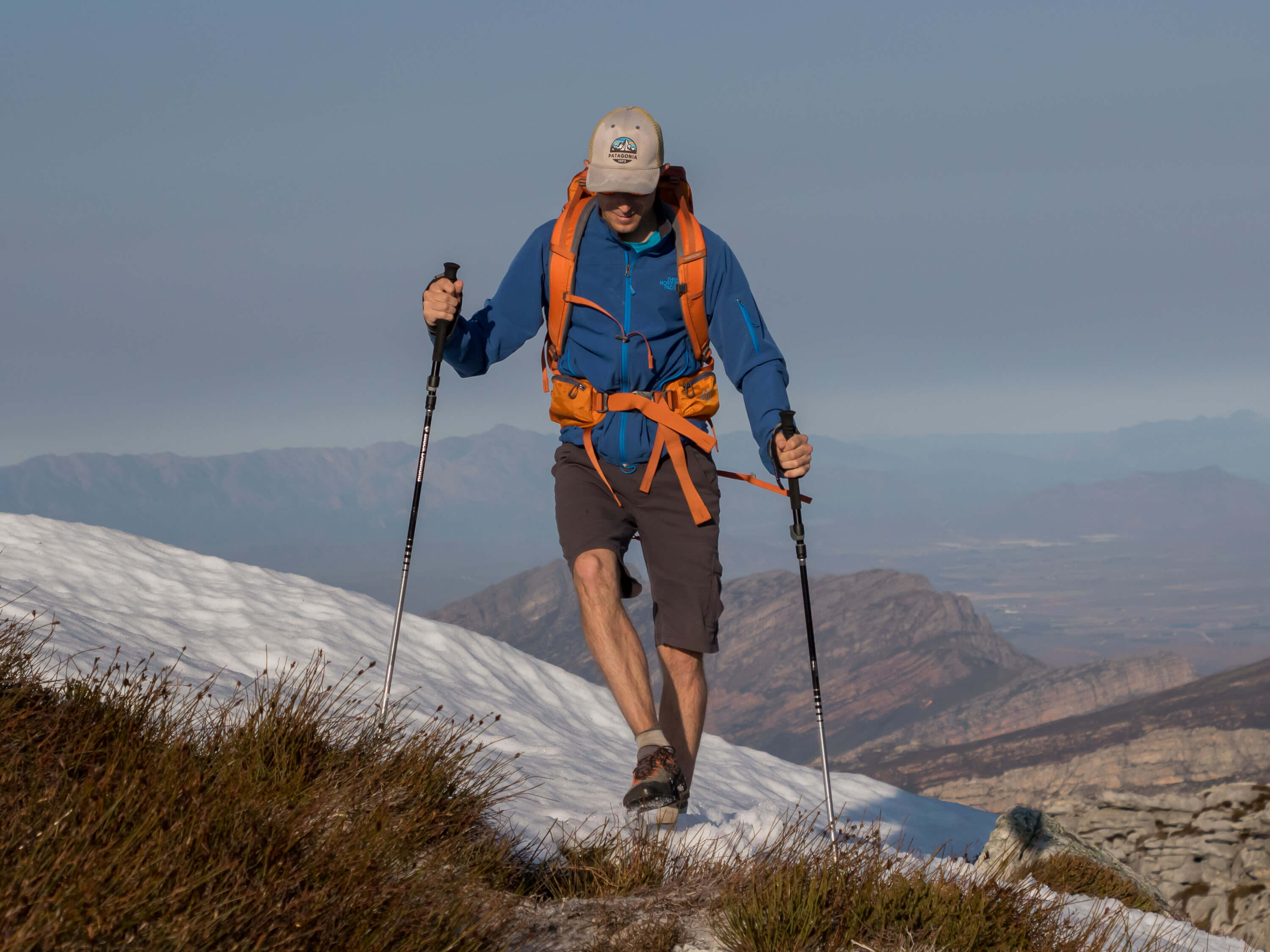
Something between you and nasty plants
Trekking poles are also useful when you’re hiking in areas with poison ivy, stinging nettles, and other unpleasant plants. When faced with such unfriendly flora, you can use your poles to hold offensive fronds off to one side as you pass. Just make sure that you don’t release springy vegetation into the hiker behind you as you move past. Some people have suggested that you could also use poles for fending off aggressive wildlife, but before you even start to think of your sticks as a weapon that can be used in an animal attack, research the best way to respond to different wildlife encounters. Retaliation only enrages certain predators.
A little more personal space when the trail is crowded
This might be an unlikely benefit, unless you’re an avid racer, but it’s something worth considering nonetheless. Personal space can be at a premium during races, and poles allow you to claim the few feet in front of you – that which is rightfully yours. Without your poles swinging out in front of you, other runners might sidestep into that space. Poles also allow you to deflect other, stray poles that come your way (usually wielded by a runner next to or in front of you). Would these defensive advantages be enough for me to warrant carrying them on runs where I’d have little other use for them? No, but when I do carry them, I use them to their fullest. And sometimes that means creating a little extra space for myself.
Tarp rigging
Many lightweight tents, shelters and tarps use trekking poles as supports, negating the need to carry dedicated tent poles. This weight saving tactic is especially useful to ultralight backpackers and fastpackers, who want to get the most from every ounce. But even the less weight-obsessed can benefit from this dual purpose approach. 250 grams (8.8oz)saved on tent poles is 250 grams that can be spent on something else, and thru-hikers will tell you that optimising weight to allow for a few little luxuries can make your time on the trail that much more enjoyable. For the weight of your tent poles, you could carry an inflatable camping pillow, a french press, and an extra slab of chocolate.
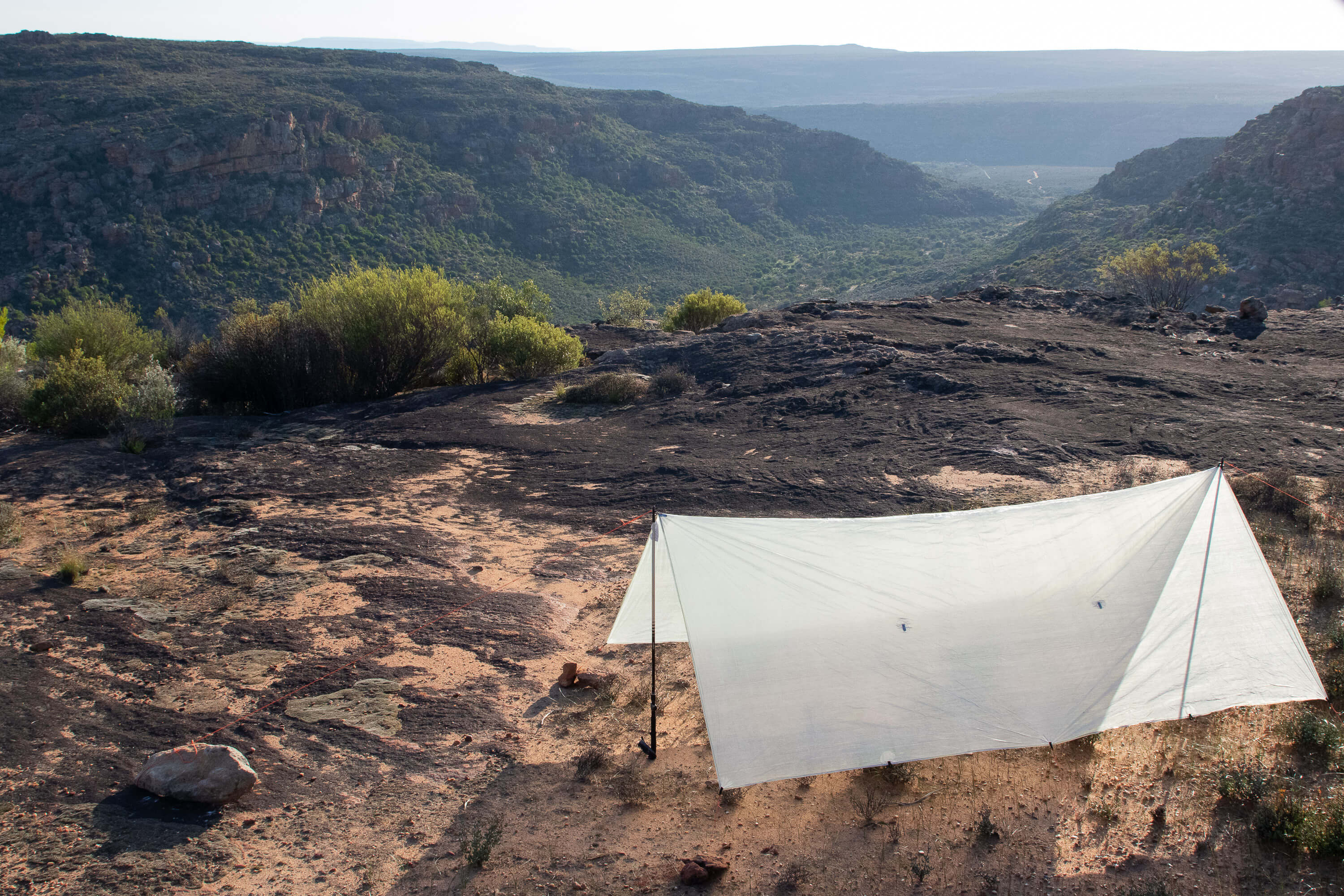
Cons
Dependency issues
I like to run unfettered by poles most of the time, but I also recognise the advantages of using sticks in certain situations. My concern is that I will become lazy and start trying to make poles work for me even when I don’t need them. The danger here, for runners at least, is that thoughtless overuse can encourage bad habits like relying on your poles for balance when you should use your core. If you took this to the extreme, you could develop a crutch-like dependence on your poles, and no fleet-footed runner wants to become a permanent semi-mechanised quadruped. Be vigilant to the impulse to carry on using poles when you should put them away.
Something extra to carry
The most obvious downside to trekking poles is that you have to carry them when you don’t need them. This is more of a factor for trail runners, who are less likely to use them when running the flats and downhills. You then have to carry their poles or attach them to your vest or pack. Depending on the vest and the length of your poles, this could make eating and other tasks more difficult. When choosing a new vest or poles, it’s a good idea to check how poles will attach to a vest. Sticks shouldn’t alter the fit of your pack or obstruct your arms. The same applies to hikers. Even though you won’t stow your poles as frequently when hiking, you’ll have to take off your pack to do so.
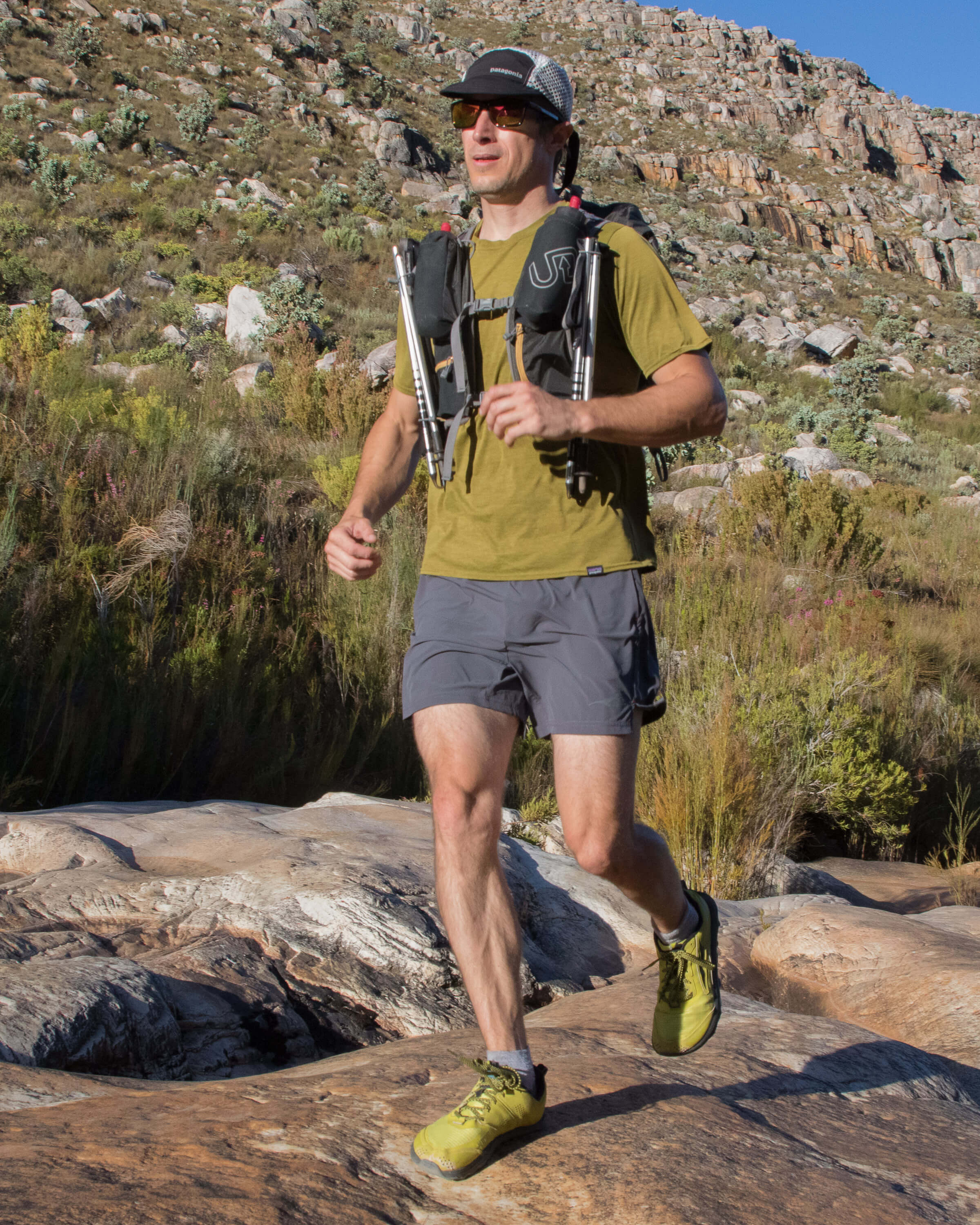

Increased energy expenditure when they’re not needed
Hikers will spend more time with poles in hand for two reasons: sticks are more useful to hikers more of the time, and you usually have to take off a hiking pack to attach or remove poles. The result is that hikers are more likely to carry on using their poles when they don’t really need them. This comes at the cost of greater energy expenditure – you do, after all, have to raise your hands (weighted with 200 grams / 7 ounces) with every step or two you take when using poles. This might not seem like much, but if you’re out on a long thru-hike or long backpacking trip, all those weighted arm swings add up. I don’t carry poles on easy, low gradient hikes for this very reason.
Environmental impact
Steel carbide tips provide a solid point of contact between you and the trail, but they aren’t without their drawbacks. Metal tips can easily scar rocks and damage vegetation, and even rubber tips can leave small holes in softer sections of trail. On very popular trails like the Appalachian Trail, the effect of a thousand little punctures on soil is enough to muddy the trail or make it look freshly plowed. On other, rockier sections, the scarring of metal tips is so extensive that the thousands of little white marks are easier to follow than blazes. Swapping steel carbide tips for rubber tips is one solution, as is removing baskets to limit damage to plants, but ultimately the best way to reduce your impact is to put your poles away when you don’t really need them.
When to use trekking poles
There’s actually two questions here: When should you pack your trekking poles? And when should you actually use them, if you have them on you? And the answers may differ depending on whether you are talking about trail running or hiking with poles.
Trail running
Like many runners, I prefer to run unencumbered by poles, and so I usually take my sticks only on runs that involve sustained uphill sections. However, there are a few exceptions to this rule. Poles can be a real advantage on trails that cross many streams and rivers, and I will sometimes pack poles just to help me get across these dry. The same applies to slippery winter trails, although here in South Africa it’s usually only a few months of the year that we see ice or snow on the trail.
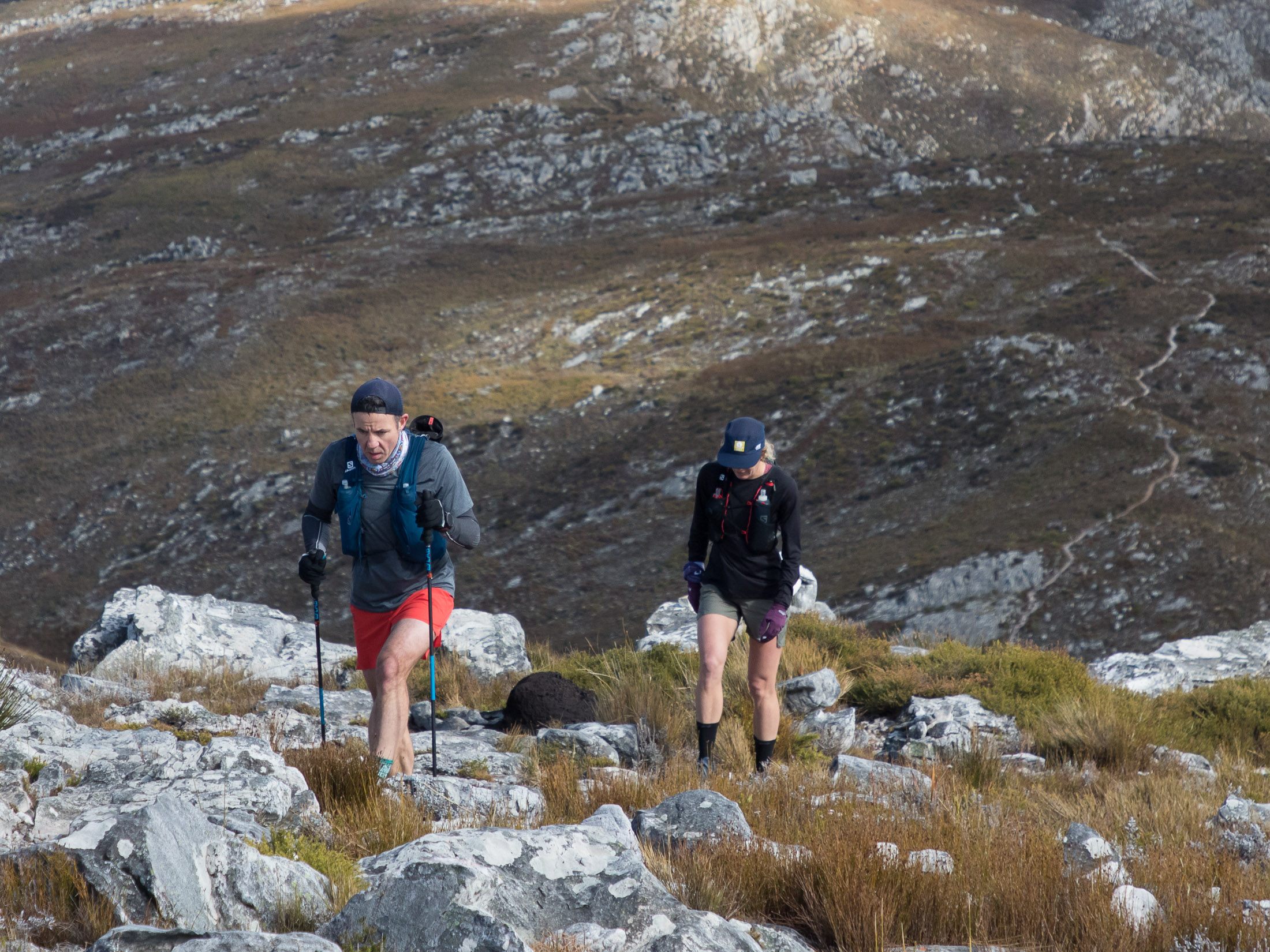
There are also instances where I’ll leave poles at home despite the advantage they’d give me up on the uphills. It’s almost impossible to scramble with poles in your hands, and clipping them to your vest doesn’t make things easy when you have to hug the rock or squeeze through chimneys. For this reason I usually don’t take my poles on trails that require scrambling. On the runs that I do carry poles, I’ll usually use them only for steepish ascents and the occasional technical section. The rest of the time, I will either carry them in the middle, or break them down and stow them in my hydration pack or vest.
Hiking
Whether or not you choose to hike with poles should depend on how heavy your pack is as well as how steep and technical the terrain is. A heavy pack creates a higher and less stable center of gravity, and a hiker with a full weekend pack can benefit greatly from having poles to lean against, especially when the terrain is steep or technical. As the incline lessens, so do the benefits of poles – an easy day hike with a light pack definitely doesn’t call for poles.
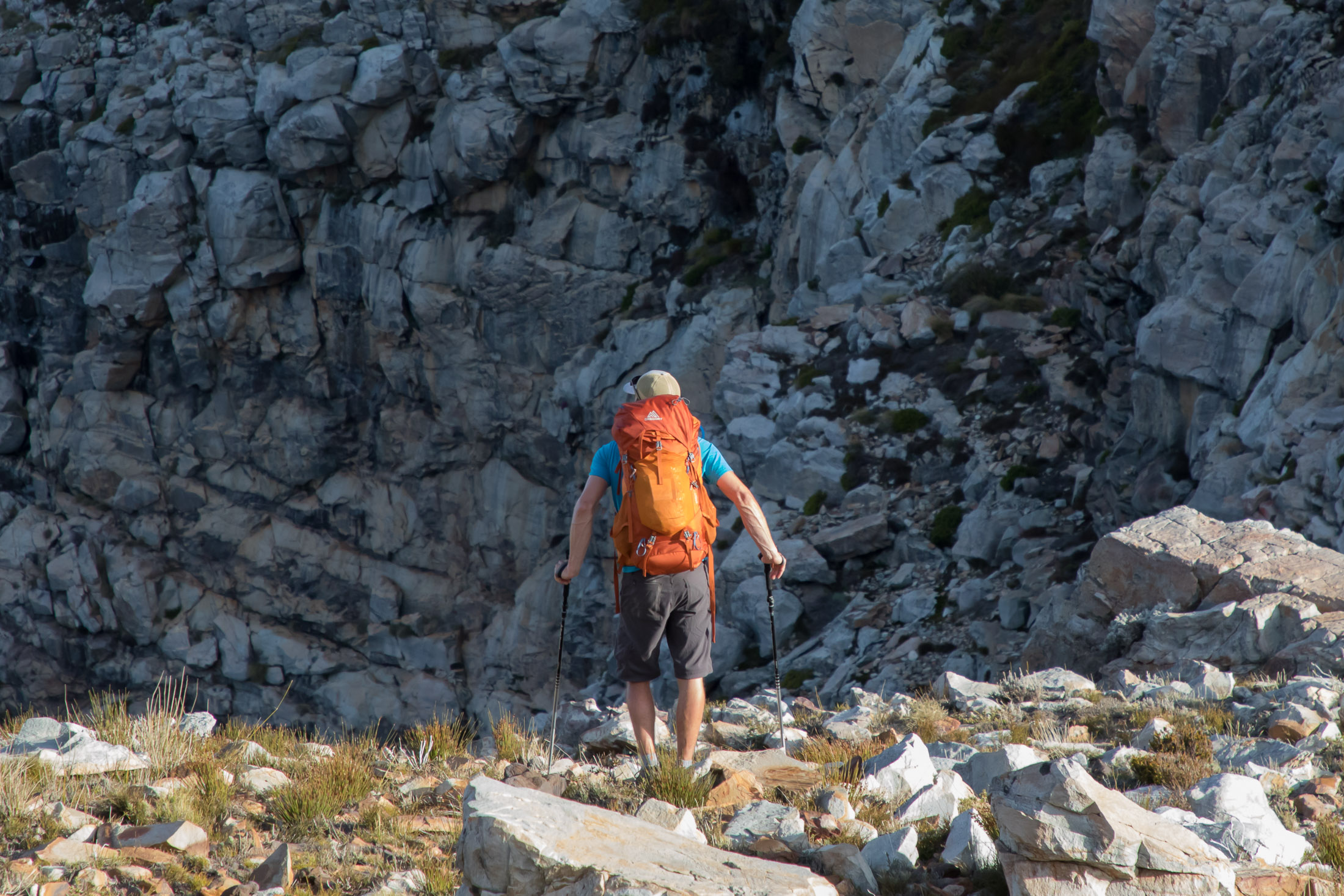
Between these two extremes, your decision to use trekking poles should come down to personal preferences and needs. Some overnight hikers will always carry poles because they’re needed for erecting a shelter, while others prefer to leave as little evidence of their presence as possible. The bottom line is that you should think before packing your poles. If you can go without them, you’d be doing yourself, other trail users, and the trail itself a service. I take poles on most overnight hikes, but I only use them for sustained uphills, technical descents and river crossings.
How to use poles
To be properly useful, your trekking poles need to be the right length. Unfortunately, there’s no one-size-fits-all formula for pole length, and there’s a lot more to the topic that I can fit in here. I do, however, have a gear guide to trekking poles that covers all factors affecting choice of pole length. But if you want the quick and dirty, here’s what conventional wisdom says: correctly sized poles will put your elbows at a 90-degree bend when you hold the poles with the tips on the ground near your feet – from your hands, they should be angled backwards at about 70 degrees.
Grip
Before we go any further, you need to know how to grip a pole. The correct grip position is not as intuitive as some might think. If your poles have a strap (and they should), put your hand up through the strap and then grip the pole. This will put the strap over the back of your hand with your thumb over the strap. Adjust the length of the strap so the pole is secure in this position. By using the strap in this way, you’ll be able to hold the pole more lightly when you aren’t bearing down on it, and a pole won’t drop to the ground – at least not immediately – if you let go of it.
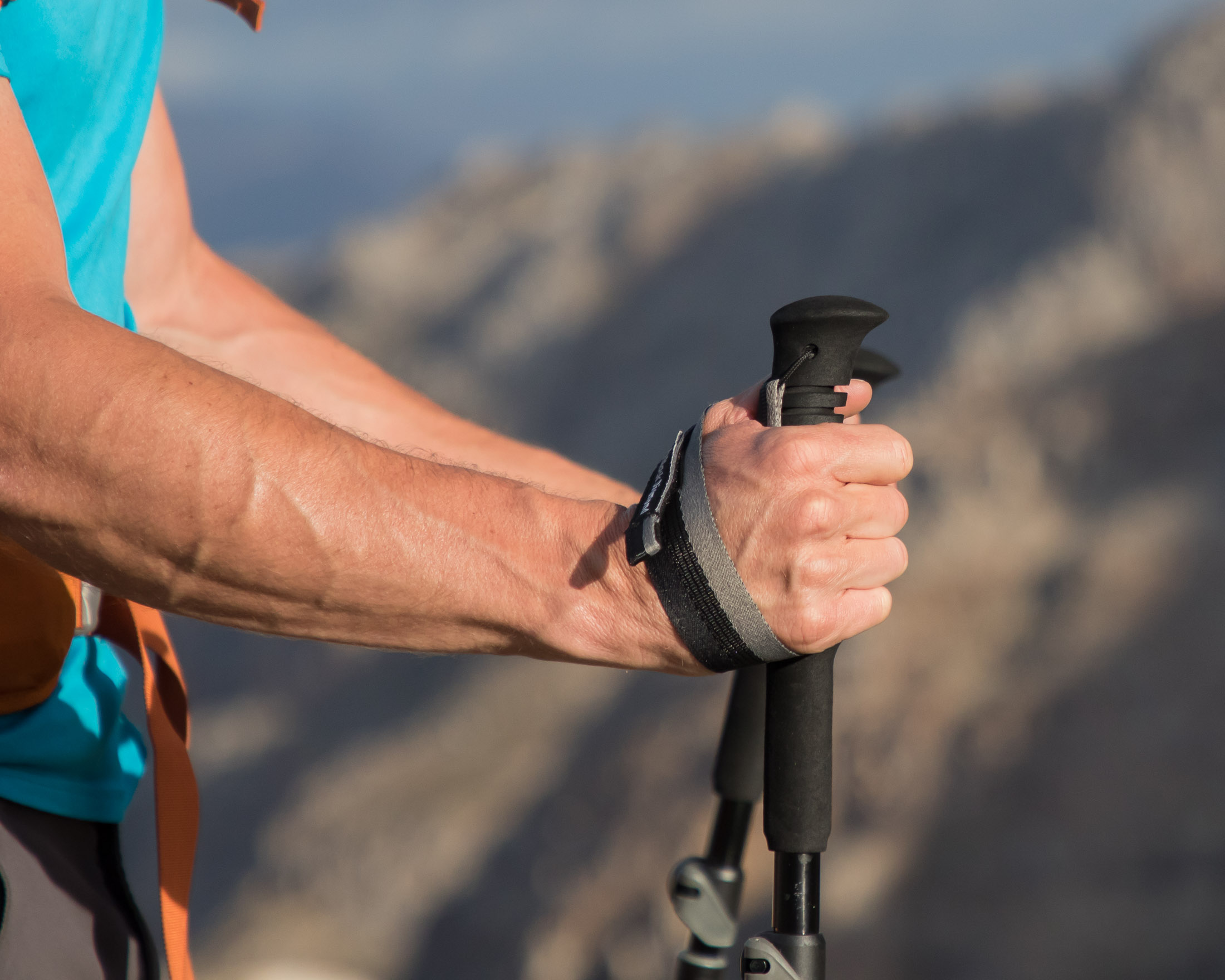
Alternating Your Poles and Legs
The most natural way to use poles is to move them in an alternating rhythm that matches the movement of the opposite leg: right foot and left pole forward, then left foot and right pole forward. This should feel natural as it matches the way your arms would swing if you were walking without poles. If your arms and feet fall out of the sync, just keep walking and hold your poles off the ground for a moment so you can reset. When you plant your poles, try to angle the tips slightly backwards (roughly 70 degrees) as this will help you impart forward motion through the poles.
Double Planting
Double planting is best for power-hiking up inclines and for getting yourself up and over obstacles. With this method, you set both poles forward, take two or three steps, swing the poles forward, and repeat. While the technique is simple, you will need to develop some strength in your shoulders before you can use this technique to its full potential.
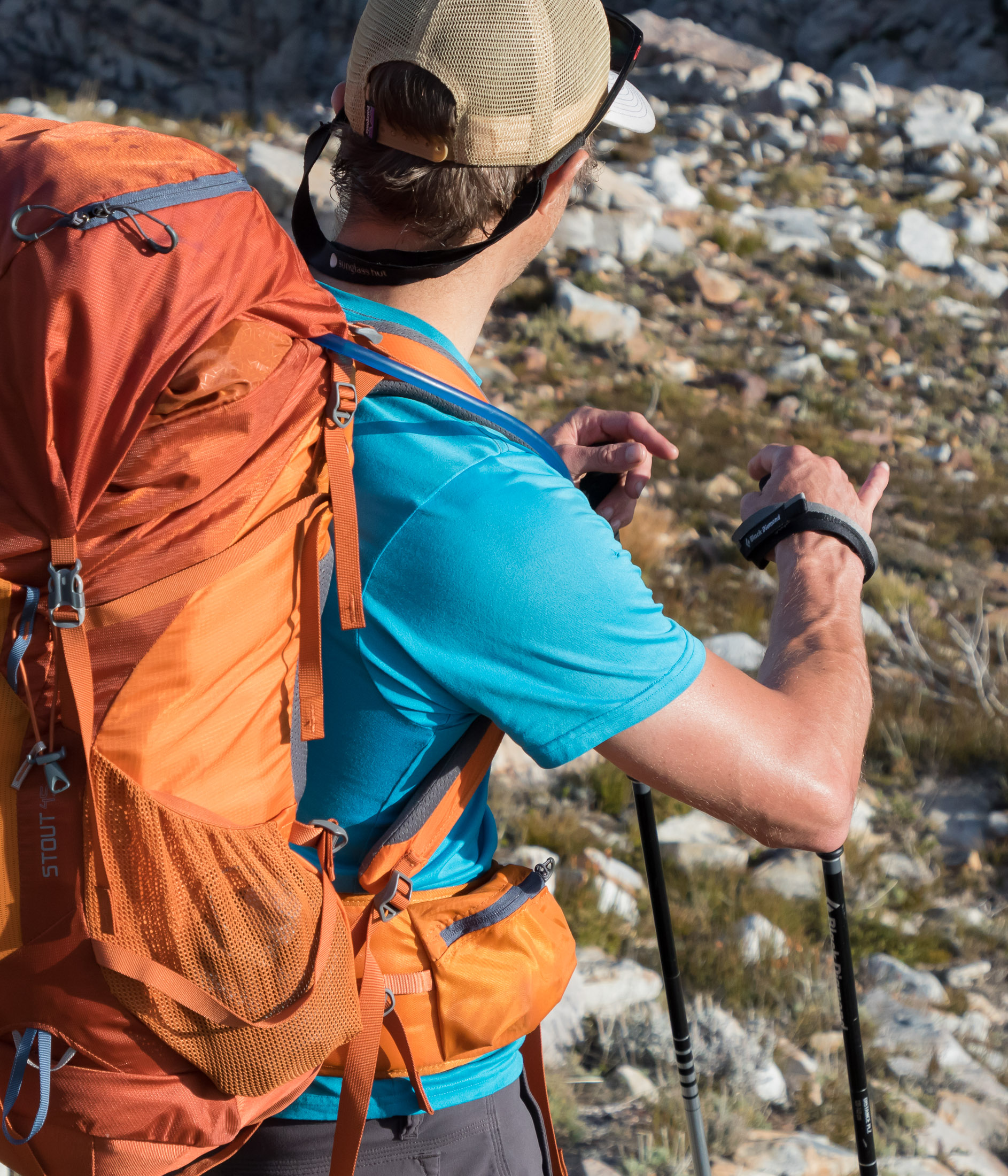
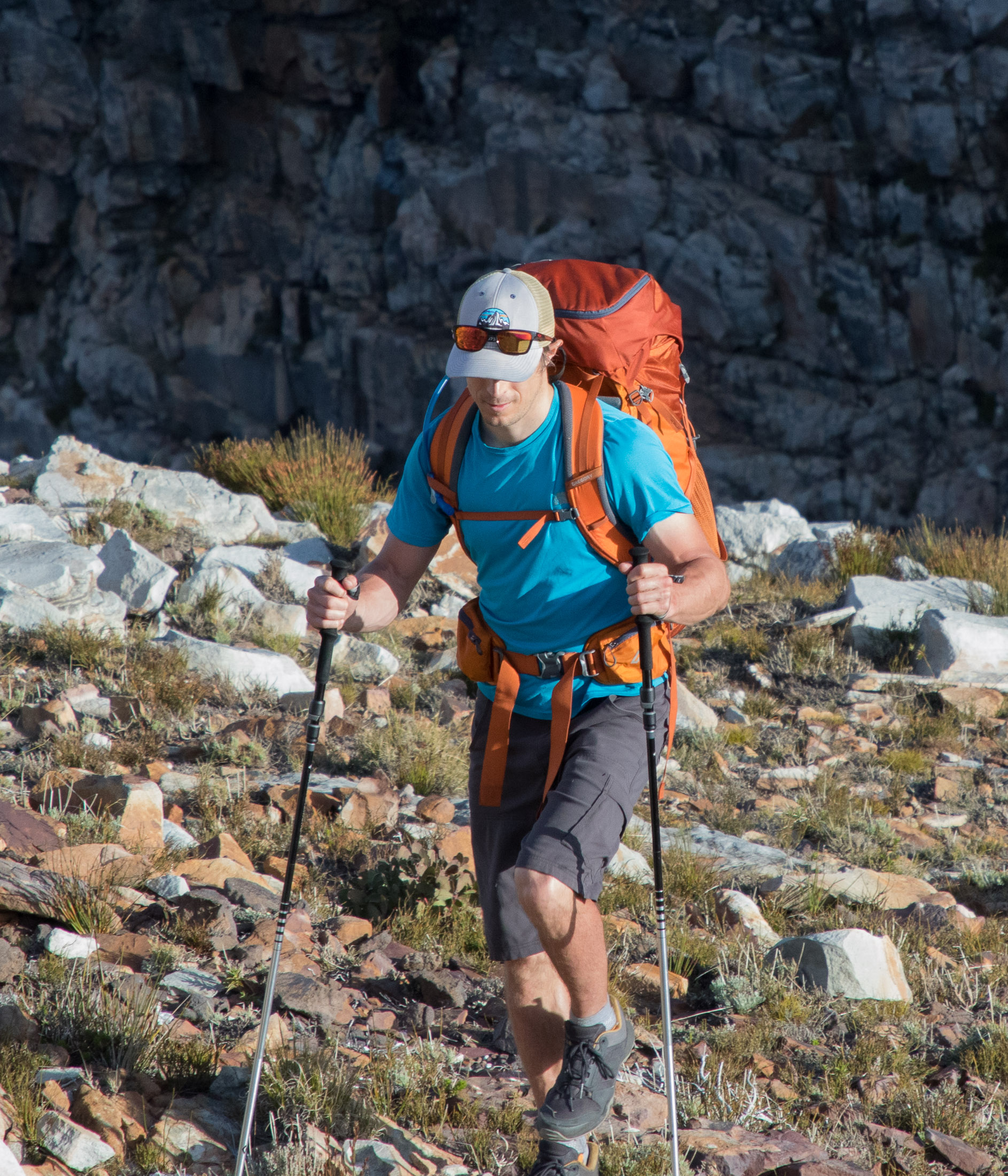
Adjusting pole length for incline
The correct pole length for general use puts a 90-degree bend in your elbows, but adjustable-length poles can also be lengthened or shortened to suit the angle of a slope.
Long uphill sections
For long and steepish uphill sections, consider shortening each pole by about 5–10cm to get better leverage. The steeper the slope, the shorter you should make your poles. If your poles pull your shoulders in an unnatural, lifted position, or push them up into your backpack straps, your poles are still too long.
Long downhill sections
For long downhills, it’s best to lengthen your poles by about 5–10cm from their default length (where your elbow is at 90 degrees). Giving your poles extra reach will prevent you from having to stoop and so will keep your body in a more upright and balanced position.
Conditioning
To make the most of trekking poles, the muscles in your arms, back and core need to be strong enough to take the extra load. If you are a skier or climber that’s not going to be an issue, but if it’s been years since you did any kind of upper body exercise, your body is going to need some time to adapt. If you were to go into a big race or hike unprepared, your poles could be more or a burden than a benefit. You see this in runners who, exhausted, drag their shiny new poles behind them - tick, tick, tick. Don’t be that guy.
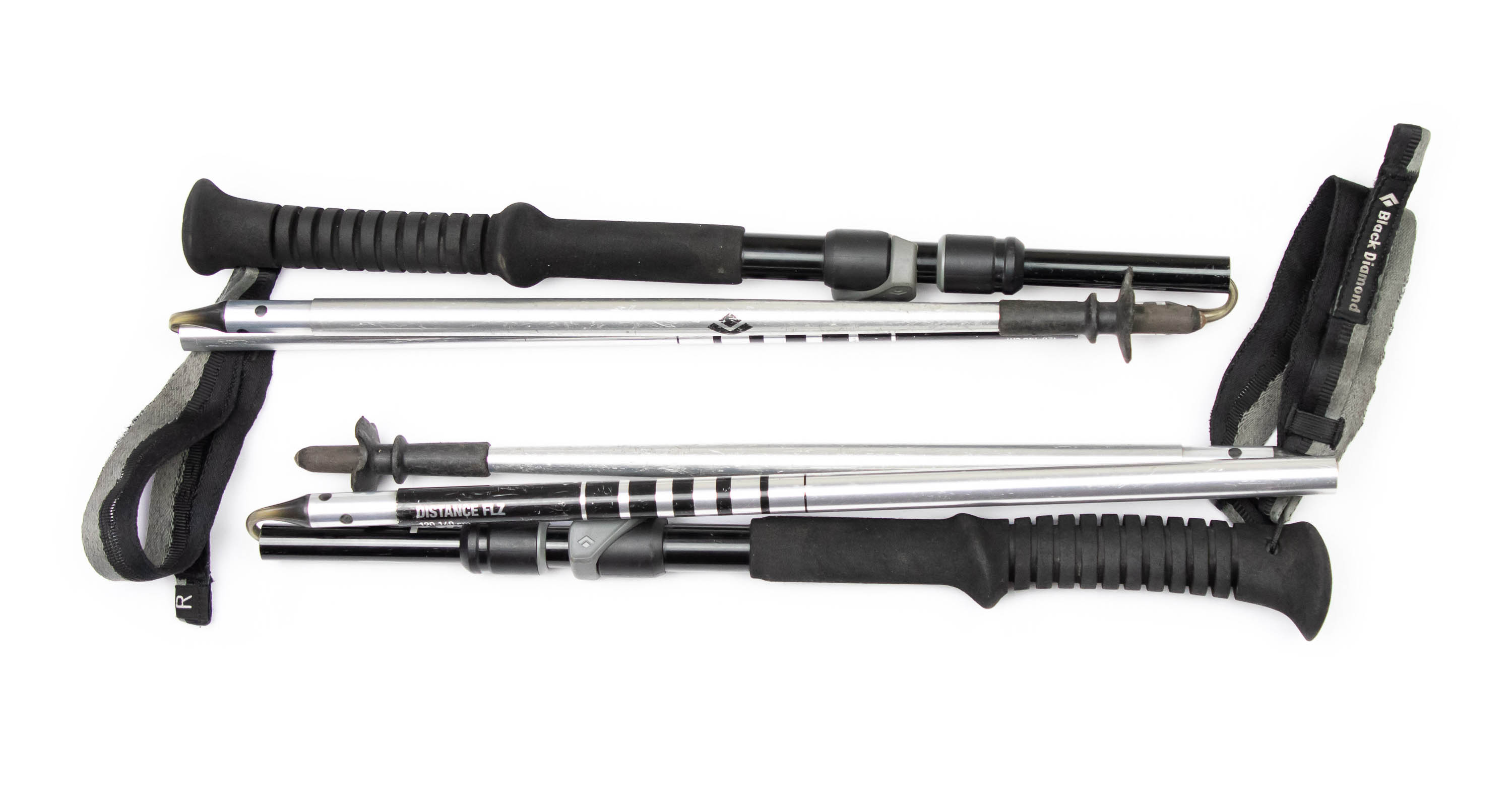
You need to use poles at least twice a week for a month to see any kind of progress, but the type of conditioning you do is as important as the amount of training you do. Practice on the type of terrain you expect to use your poles most. For runners, they will probably be mostly uphills whereas hikers will want practice using them on uphills, downhills and even flats. If you are a runner, it would also be a good idea to practice breaking down and stowing your poles while on the move.
Get more advice from this gear head
The best way to decide whether poles are right for you is to borrow a pair (in the correct length) from a friend and take them out on a test run or hike, remembering that your upper body will need time to adjust if it’s not immediately up to the task. If you’ve already decided that you want poles, the next question is how to choose a pair. Luckily, the second part of this series, How to Choose Trekking Poles, can answer that for you. Happy reading.
